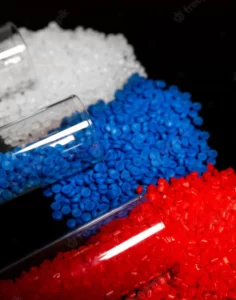
Polymer additives
The inherent properties of materials sometimes do not meet the expected performance specifications or fit manufacturing constraints. In this case, we use additives.
Modification of polymer properties
These materials are used to correct the properties of polymer products.
Modifying the surface properties of a given plastic or elastomer is one of the most difficult achievements.
How to use a polymer additive depends on the type of polymer and its application. Proper use of polymer additives improves many properties such as durability, hardness, clarity, air resistance, and thus creates a higher value product.
Electrical properties can be affected by many fillers. For example, an electromagnetic shield can be introduced into plastics by adding conductive fillers, which are usually poor electrical conductors.
Or, for example, anti-static agents can be used to absorb moisture, increasing the amount of static charge.
In some cases, an additive such as some antioxidants is used in many polymers for a wide range of final applications. In other cases, an additive may be considered for a given polymer and for a specific end use.
Physical division of these additives
- solids
- Tires
- liquids
- gases
The division of these additives in terms of performance
There are many groups for this division, but some of the most important ones are as follows:
- Fillers
- Emollients
- Flame Retardant
- Thermal stabilizers
- Antistatic agents
- Blowing agents
- Psychostimulants
- masterbatch (color)
- Networking agents
- Anti-fog additives (or Defog Anti fog)
- Additives resistant to ultraviolet rays (Anti UV)
-
 به لیست علاقه مندی ها اضافه کنیدبه لیست علاقه مندی ها اضافه کنید
به لیست علاقه مندی ها اضافه کنیدبه لیست علاقه مندی ها اضافه کنید -
 به لیست علاقه مندی ها اضافه کنیدبه لیست علاقه مندی ها اضافه کنید
به لیست علاقه مندی ها اضافه کنیدبه لیست علاقه مندی ها اضافه کنید -
 به لیست علاقه مندی ها اضافه کنیدبه لیست علاقه مندی ها اضافه کنید
به لیست علاقه مندی ها اضافه کنیدبه لیست علاقه مندی ها اضافه کنید
